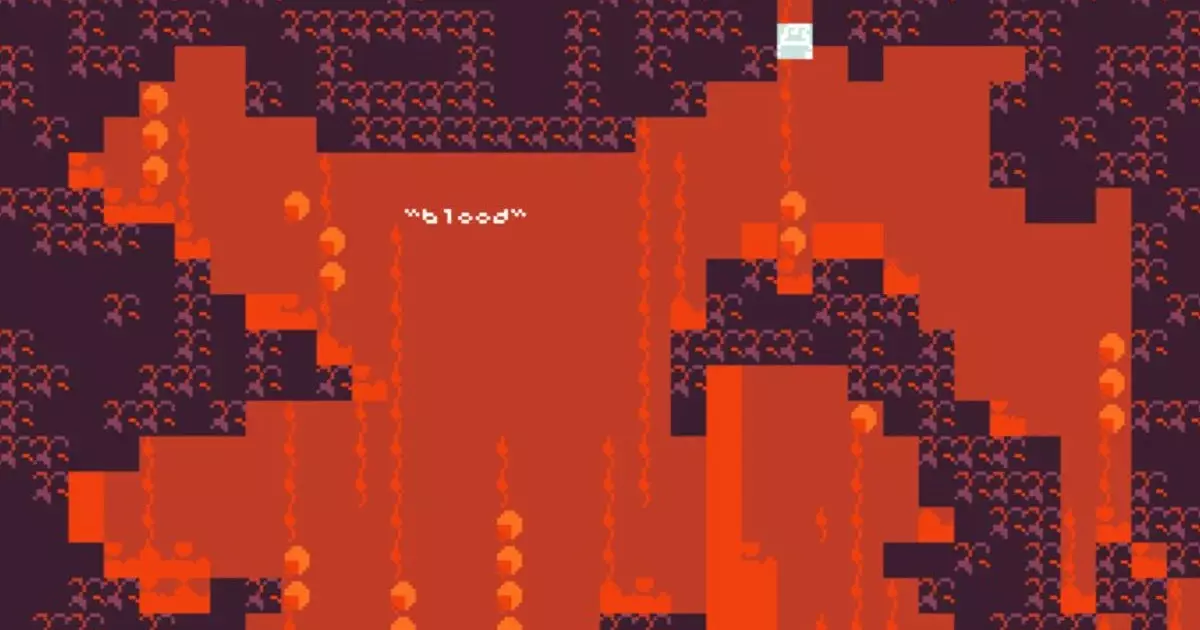In an era saturated with formulaic game development, the indie gaming space often serves as fertile ground for experimentation and innovation. Droqen, known for his unconventional masterpiece “Starseed Pilgrim,” is set to challenge conventional gaming paradigms once again with his latest announcement: “The End Of Gameplay.” This game boldly encapsulates a mission to obliterate the very essence of “gameplay,” inviting players to embark on a thought-provoking journey that defies mainstream norms.
The announcement of this 2D platformer has captured the attention of gamers who revel in the avant-garde. Droqen openly admits that this venture is exploratory, designed to peel back the layers of traditional gameplay and expose the underlying philosophies of game mechanics. However, players ready to embrace such a challenge are forewarned: navigating through this abstract landscape may not lead to a clear destination, but it promises to be an enlightening experience nonetheless.
A Stroll Down Memory Lane
For those unfamiliar with “Starseed Pilgrim,” it was a delightful conundrum wrapped in a minimalist aesthetic—an experience discovered rather than explicitly directed. With elements like planting seeds whose effects remained ambiguous, players found themselves wandering through a labyrinth of poetry and enigma. This opaque artistry resonated particularly well with indie developers and niche audiences, while perhaps perplexing a wider market. Droqen’s assertion that “The End Of Gameplay” is “like Starseed Pilgrim, but only all the parts that nobody told me they cared about” is both intriguing and disconcerting. It suggests a willingness to dive even deeper into the rabbit hole of existential gaming.
But what does it mean to “kill gameplay”? The implicit question hangs in the air like an unsolved puzzle. Droqen’s project seems to challenge not just the audience’s understanding of what constitutes a game but also invites them to confront the societal expectations tethered to ludic experiences. The developer has remarked, “If you want to bathe in the blood of its ending or just want to watch in horror,” the opportunity awaits. This overt urge for destruction is a bracing contradiction to the compelling archetypes of challenge, reward, and progress that have become synonymous with gaming.
A Crucible of Creation
Interestingly, Droqen’s admission about the initial intention to release the game to a select audience raises questions about the relationship between artist and viewer in the digital age. In a world where exposure and virality often dictate a creator’s success, the notion of releasing a work to “as few people as possible” becomes paradoxically liberating. In a time where public perception can be an oppressive force, perhaps the goal is not mass distribution but a curated experience for those who truly resonate with its themes.
The anthology format of the game aligns with a growing trend within the indie circuit, as seen in the likes of Terry Cavanagh’s compilations and Stephen Gillmurphy’s ingenious releases. This collective approach offers a unique platform for creative expression while allowing for the exploration of varied narratives within a singular art piece. Droqen’s claim echoes a shared sentiment among these creators—art is meant to be unearthed and not merely displayed.
A Cultural Commentary on Gameplay
In the grand tapestry of video game culture, Droqen’s “The End Of Gameplay” emerges as a bold commentary on what gameplay can (and should) stand for. As GAMEPLAY itself becomes a term laden with expectation, the creator chooses to grapple with it… and ultimately, dismantle it. I find myself eagerly looking forward to witnessing how this idea will manifest in real-time. As many players begin to analyze their gaming experiences with a more critical eye, it’s exhilarating to see a developer that is willing to catalyze the conversation about expectations, immersiveness, and narrative depth.
As the release date approaches—the “full flower moon in May,” no less—curiosity surrounds the translation of this philosophical inquiry into an engaging interactive experience. Will it alienate casual players, or will it foster a dedicated fan base eager to immerse themselves in profound concepts? The blend of art, interaction, and emotional exploration paves a compelling path for a redefining of not just one artist’s vision but perhaps a larger dialogic shift within the gaming community itself.

